A year’s worth of surprising and poignant nature photos
The shortlisted entries for the annual Wildlife Photographer of the Year contest spotlight stunning, remote slices of nature while also detailing the role humans have in shaping the natural world.
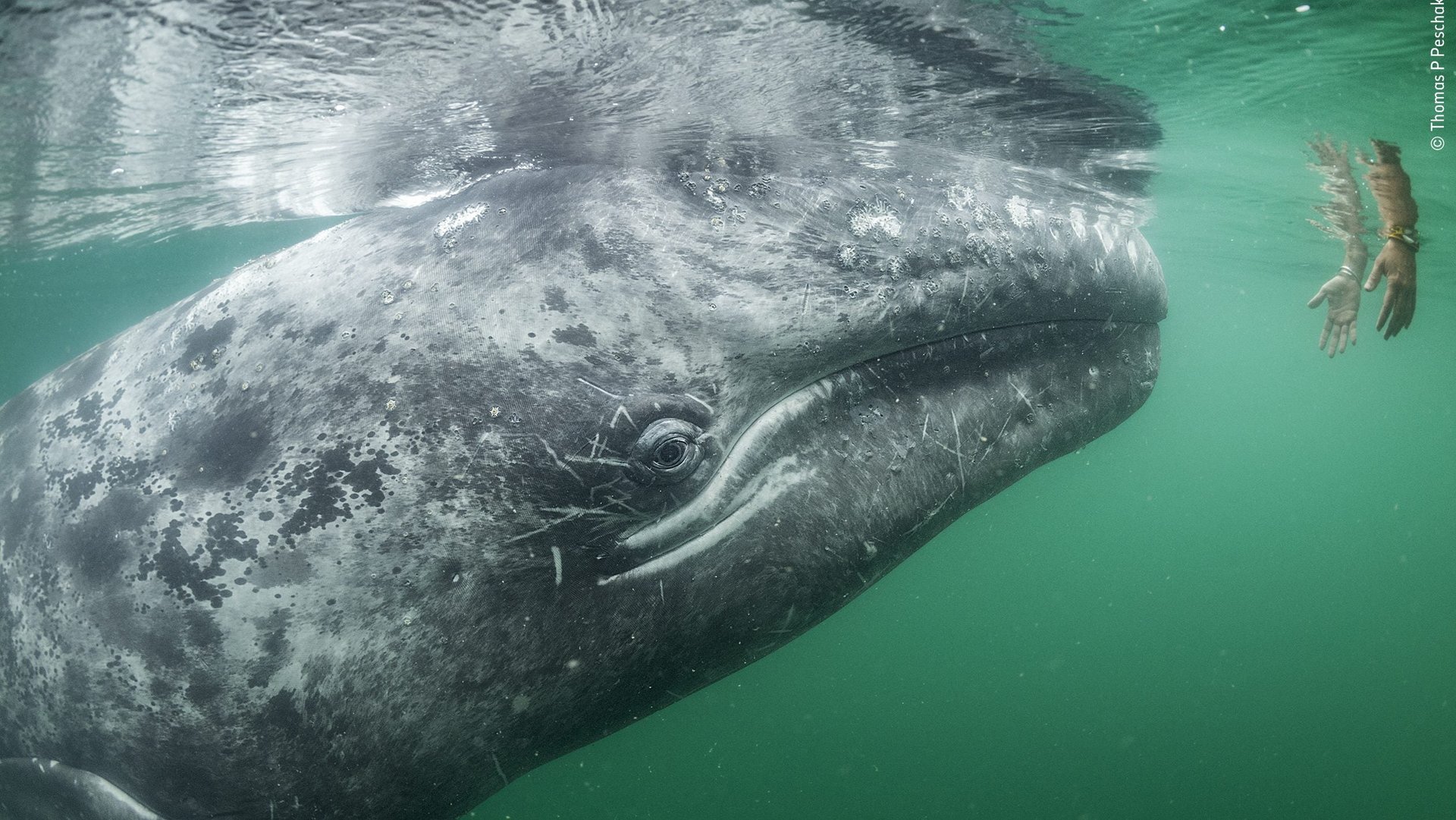

The shortlisted entries for the annual Wildlife Photographer of the Year contest spotlight stunning, remote slices of nature while also detailing the role humans have in shaping the natural world.
The official winners of the contest run by Britain’s Natural History Museum will be announced next month. The selection of “Highly Commended” entries capture some brutal moments of nature such as a bull hippo killing a hippo calf. An intricate, beautiful photo focuses on the complex cocoon made by the Chinese Cyna moth.
One simple image shows a human hand reaching out to a grey whale, illustrating how humans and animals can peacefully interact. One entry, however, shows the devastating effects of waste and carelessness—a young sea turtle strangled to death by a discarded beach chair.
Here are some of the most captivating entries, with descriptions provided by the contest:
“Touching trust”
A curious young grey whale approaches a pair of hands reaching down from a tourist boat. In San Ignacio Lagoon, on the coast of Mexico’s Baja California, baby grey whales and their mothers actively seek contact with people for a head scratch or back rub. The lagoon is one of three that comprise a grey whale nursery and sanctuary—a key winter breeding ground for this surviving breeding population of grey whales, the eastern North Pacific ones.
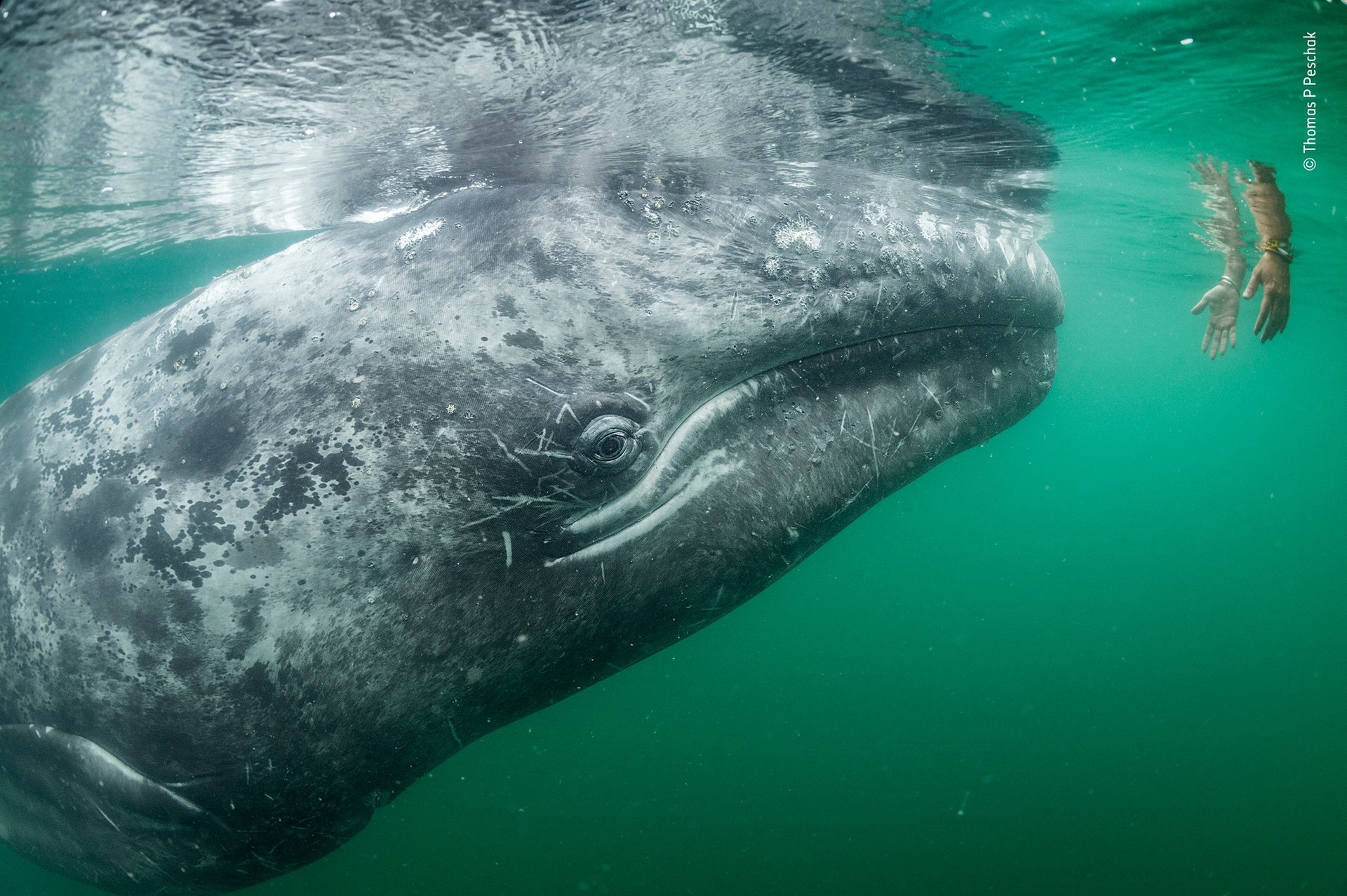
“Big cat and dog spat”
“In a rare encounter, a lone male cheetah is set upon by a pack of African wild dogs. (Both species have disappeared from much of their former ranges, with fewer than 7,000 left of each, mainly due to habitat loss and fragmentation. Both exist at low densities.) Peter had been following the dogs by vehicle as they hunted in Zimanga Private Game Reserve, KwaZulu-Natal, South Africa. A warthog had just escaped thepack when the leading dogs came across the big cat. At first, the dogs were wary, but as the rest of the 12-strong pack arrived, their confidence grew, and they began to encircle the cat, chirping with excitement.”
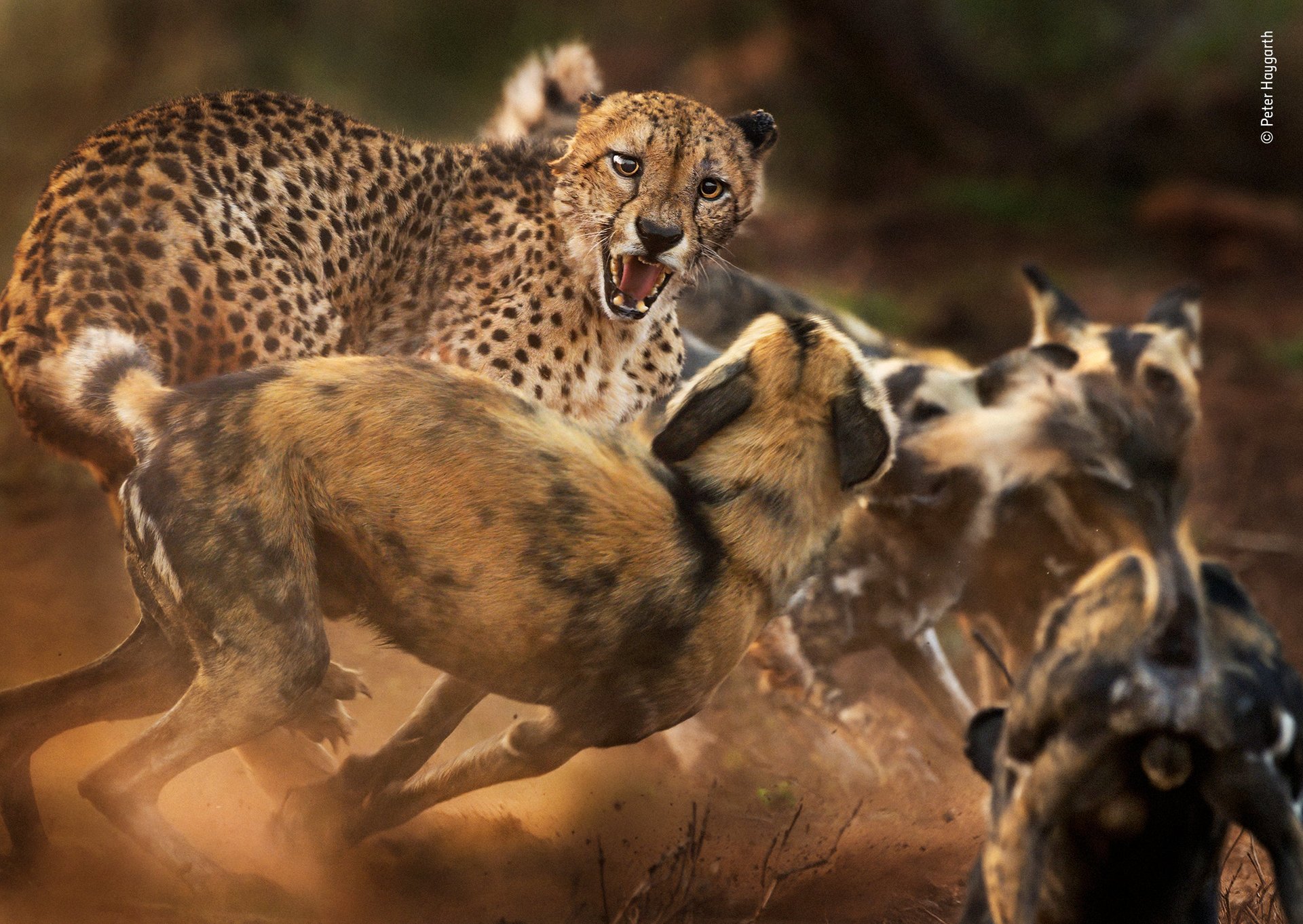
“Lucky break”
An ever-adaptable raccoon pokes her bandit-masked face out of a 1970s Ford Pinto on a deserted farm in Saskatchewan, Canada. In the back seat, her five playful kits trill with excitement. It was a sentiment shared by Jason, waiting silently in a nearby hide, who had been hoping for this chance every summer for several years.
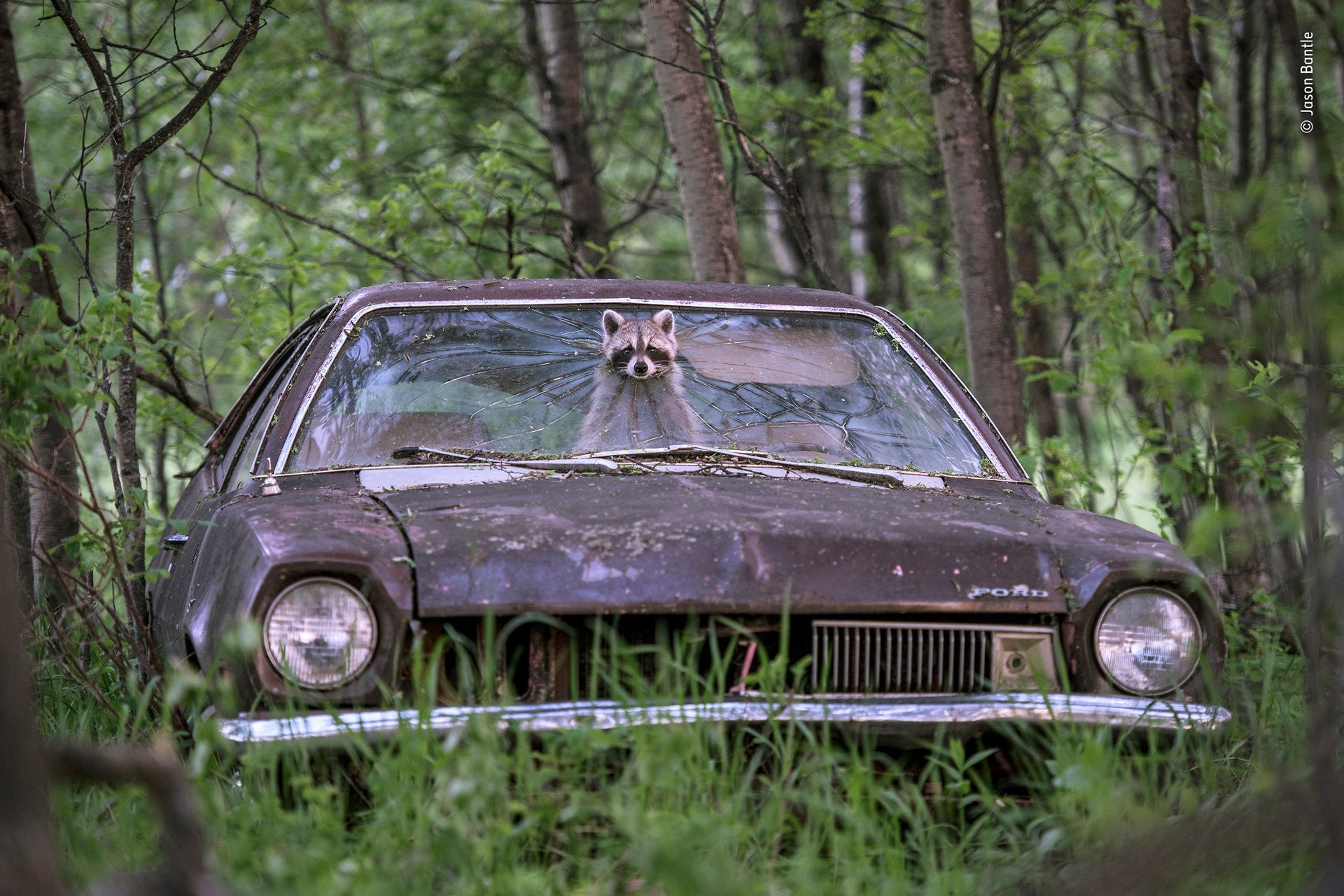
“Canopy hangout”
When Carlos’s family planned a trip to Panama’s Soberanía National Park, sloths were high on their must-see agenda. They were not disappointed. For several days, from the observation deck of the park’s canopy tower, Carlos could photograph not only birds but also this brown-throated three-toed sloth –the orange fur and the dark stripe on its back marking it as an adult male. It hung out in a cecropia tree, resting but occasionally moving, slowly, along a branch to reach new leaves.

“Last gasp”
A newborn hippo, just days old, was keeping close to its mother in the shallows of Lake Kariba, Zimbabwe, when a large bull suddenly made a bee-line for them. He chased the mother, then seized the calf in his huge gape, clearly intent on killing it. After trying to drown it, he tried to crush it to death. All the while, the distraught mother looked on. Adrian’s fast reaction and fast exposure captured the shocking drama. Infanticide among hippos is rare but may result from the stress caused through overcrowding when their day-resting pools dry out.
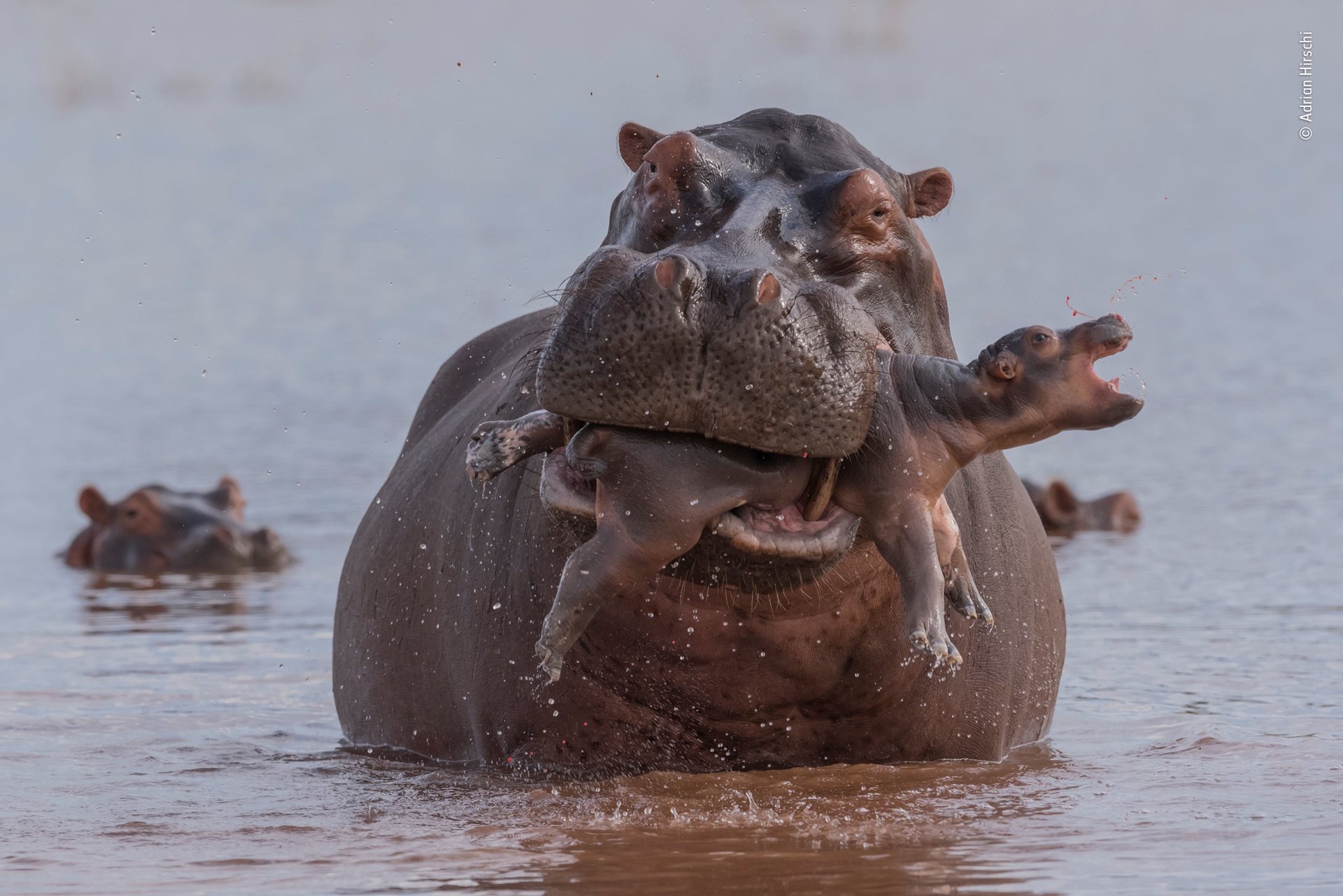
“If penguins could fly”
A gentoo penguin –the fastest underwater swimmer of all penguins—flees for its life as a leopard seal bursts out of the water. Eduardo was expecting it. He had spotted the penguin, resting on a fragment of broken ice. But he had also seen the leopard seal patrolling off the Antarctic Peninsula coast, close to the gentoo’s colony on Cuverville Island. As Eduardo’s inflatable headed towards the penguin, the seal passed directly beneath the boat.Moments later, it surged out of the water, mouth open.

“The climbing dead”
On a night-time field trip in the Peruvian Amazon rainforest, Frank spotted this bizarre-looking weevil clinging to a fern stem. Its glazed eyes showed it was dead, and the three antennae-like projections growing out of its thorax were the ripe fruiting bodies of a “zombie fungus.” Spreading inside the weevil while it was alive, the parasitic fungus had taken control of its muscles and compelled it to climb. When it was at a suitable height –for the fungus –the weevil held fast to the stem. Fueled by the weevil’s insides, the fungus then started to grow fruiting bodies topped by capsules that would release a multitude of tiny spores to infect new prey.
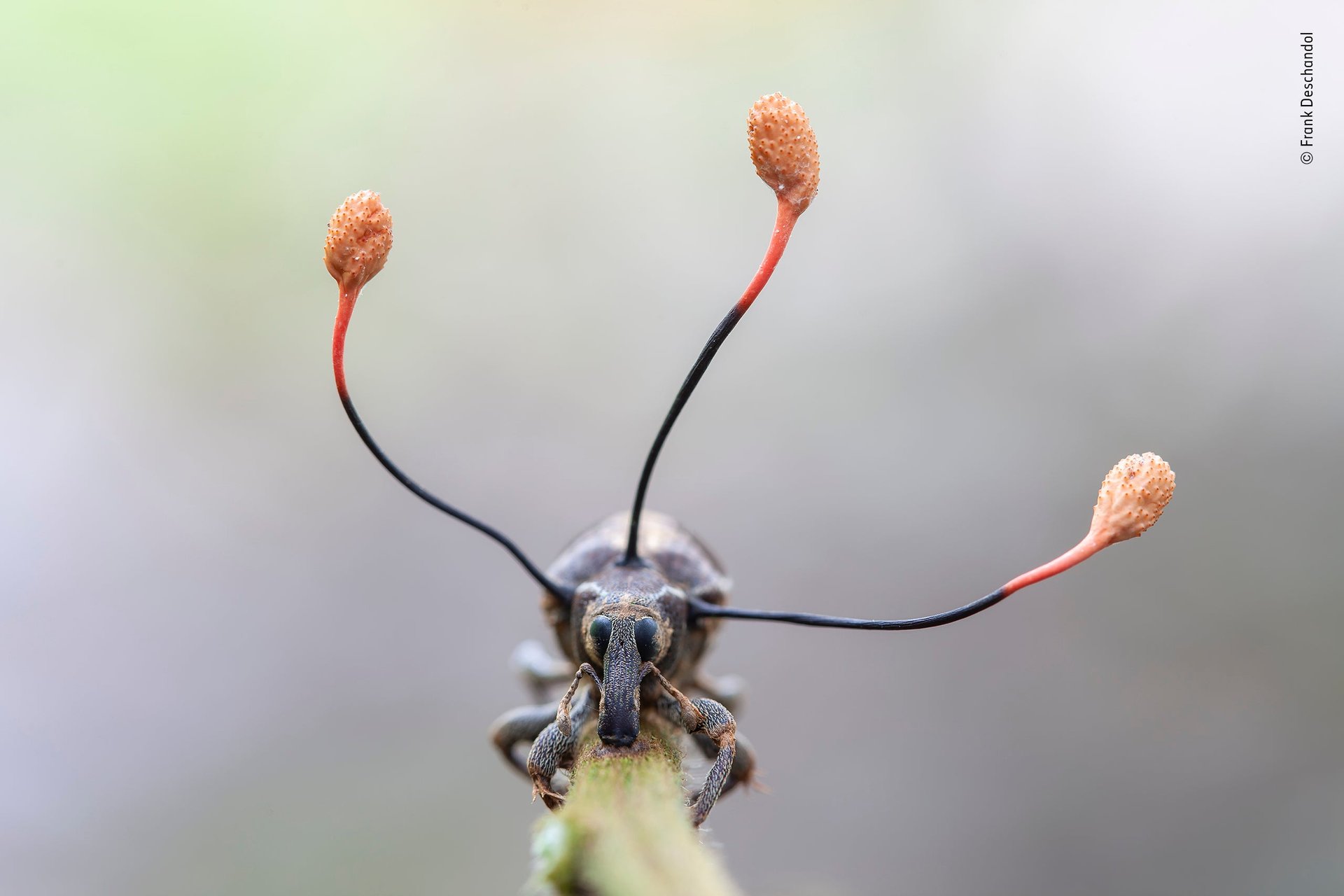
“The freshwater forest”
Slender stems of Eurasian watermilfoil, bearing whorls of soft, feathery leaves, reach for the sky from the bed of Lake Neuchâtel, Switzerland. Michel has photographed freshwater regions worldwide, but this was the first time he had dived in the lake nearest to his home. He was swimming near the surface—absorbed with the beauty of the plants and their small reddish flowers –when he spotted a huge pike disappearing into the mass of vegetation below. Very slowly, he sank down for a closer look. When he reached the bottom, he found himself immersed in an “underwater jungle with an endless view.”
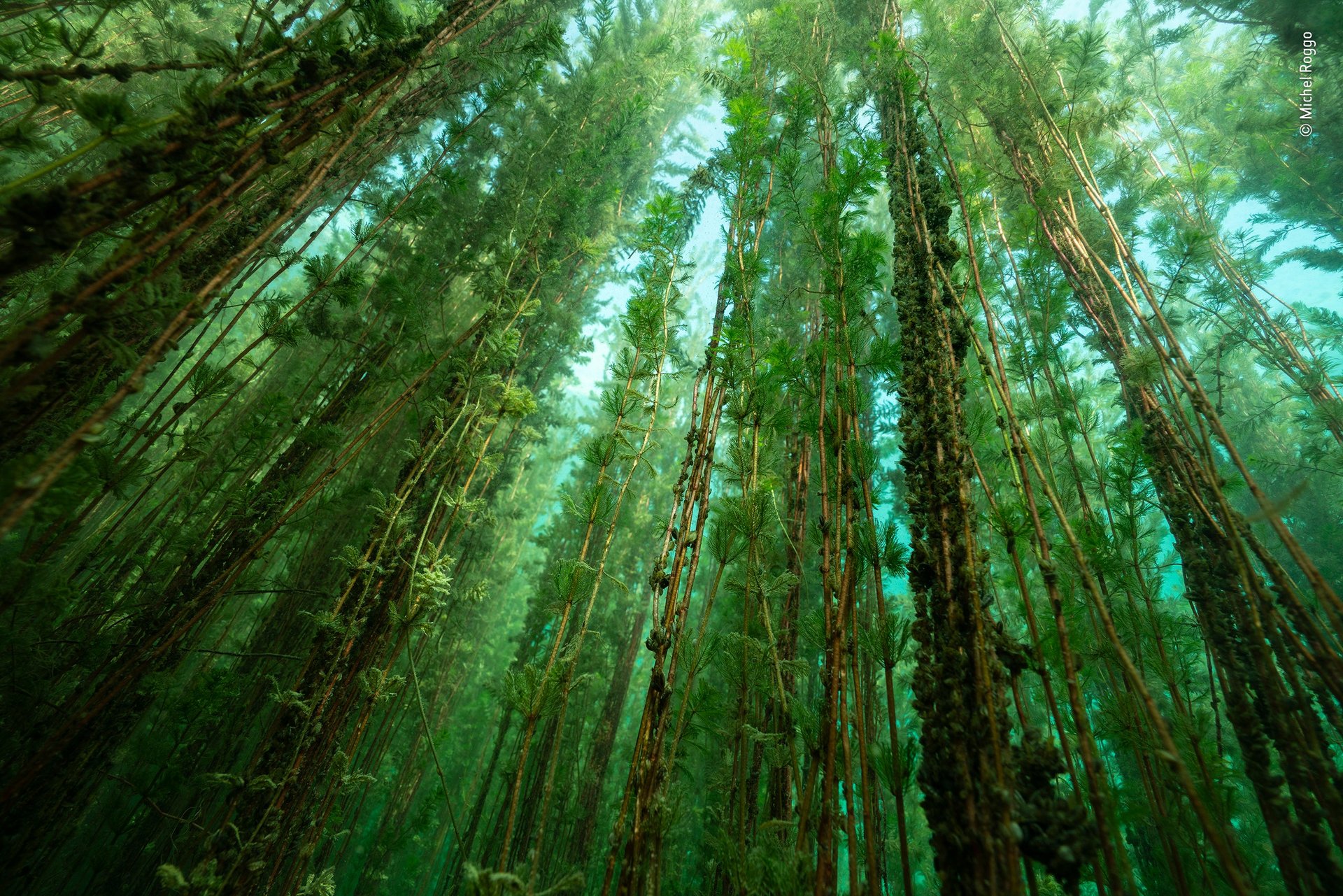
“The hair-net cocoon”
Standing side-on to the wall of the WC, his face and camera pressed against it, Minghui focused on the remarkable cocoon of a Cyna moth pupa. A more typical location would be a tree trunk or rock, as in the rainforest of Xishuangbanna, southwest China, where he had just been filming. But this caterpillar had chosen awall. It had used its long, hair-like setae to weave the delicate cocoon cage, held with silk and just 4 centimeters (11/2inches) long, inside which it would pupate. The cage must provide protection against some predators but probably not against the wasps that parasitize it.
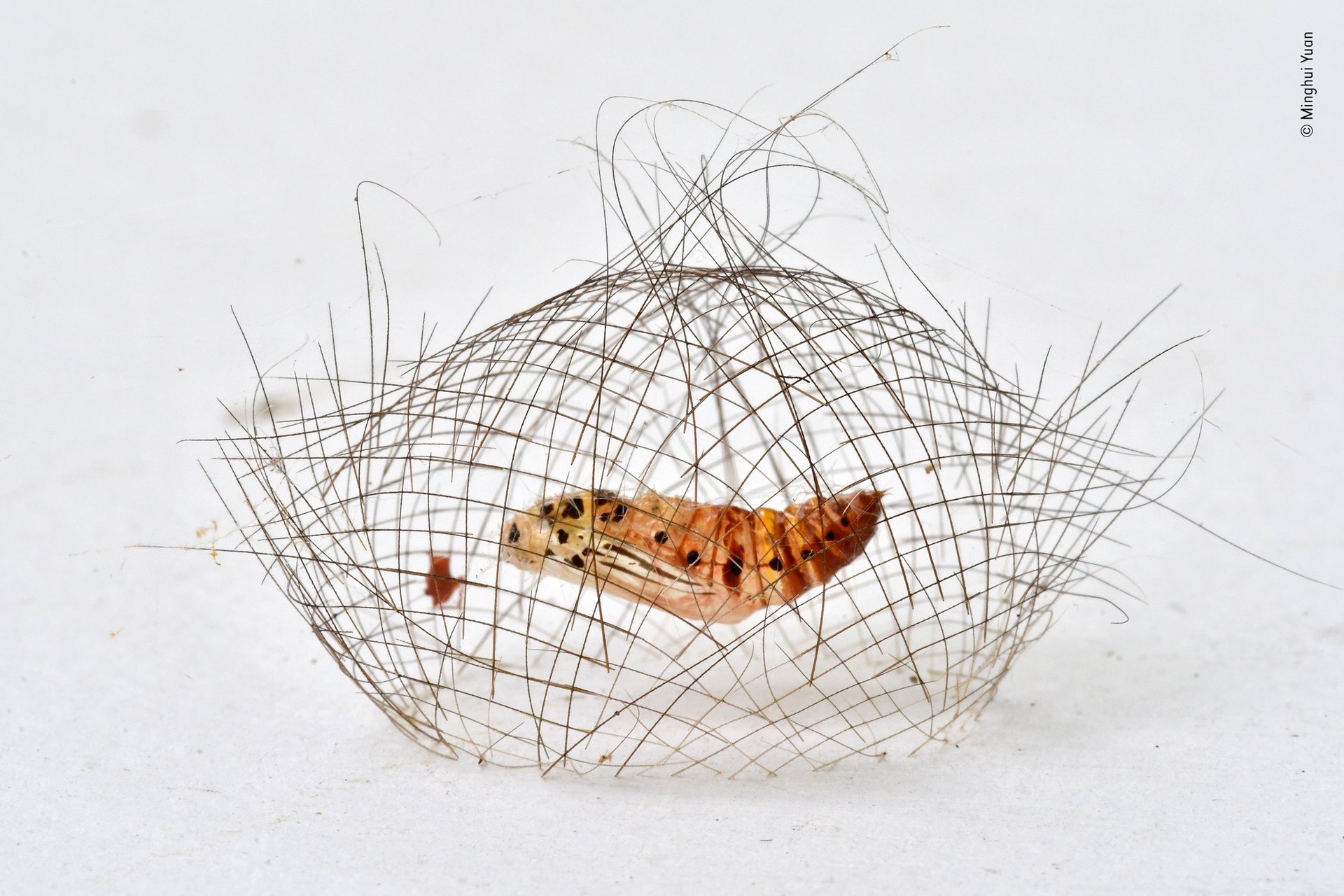
“Beach waste”
From a distance, the beach scene at Alabama’s Bon Secour National Wildlife Refuge looked appealing: blue sky, soft sand and a Kemp’s ridley sea turtle. But as Matthew and the strandings patrol team got closer they could see the fatal noose around the turtle’s neck attached to the washed-up beach chair. The Kemp’s ridley is not only one of the smallest sea turtles—just 65 centimeters (2feet) long—it is also the most endangered. Over the past 50 years, human activities–from egg and meat consumption to incidental capture in fishing nets—have greatly reduced its numbers.
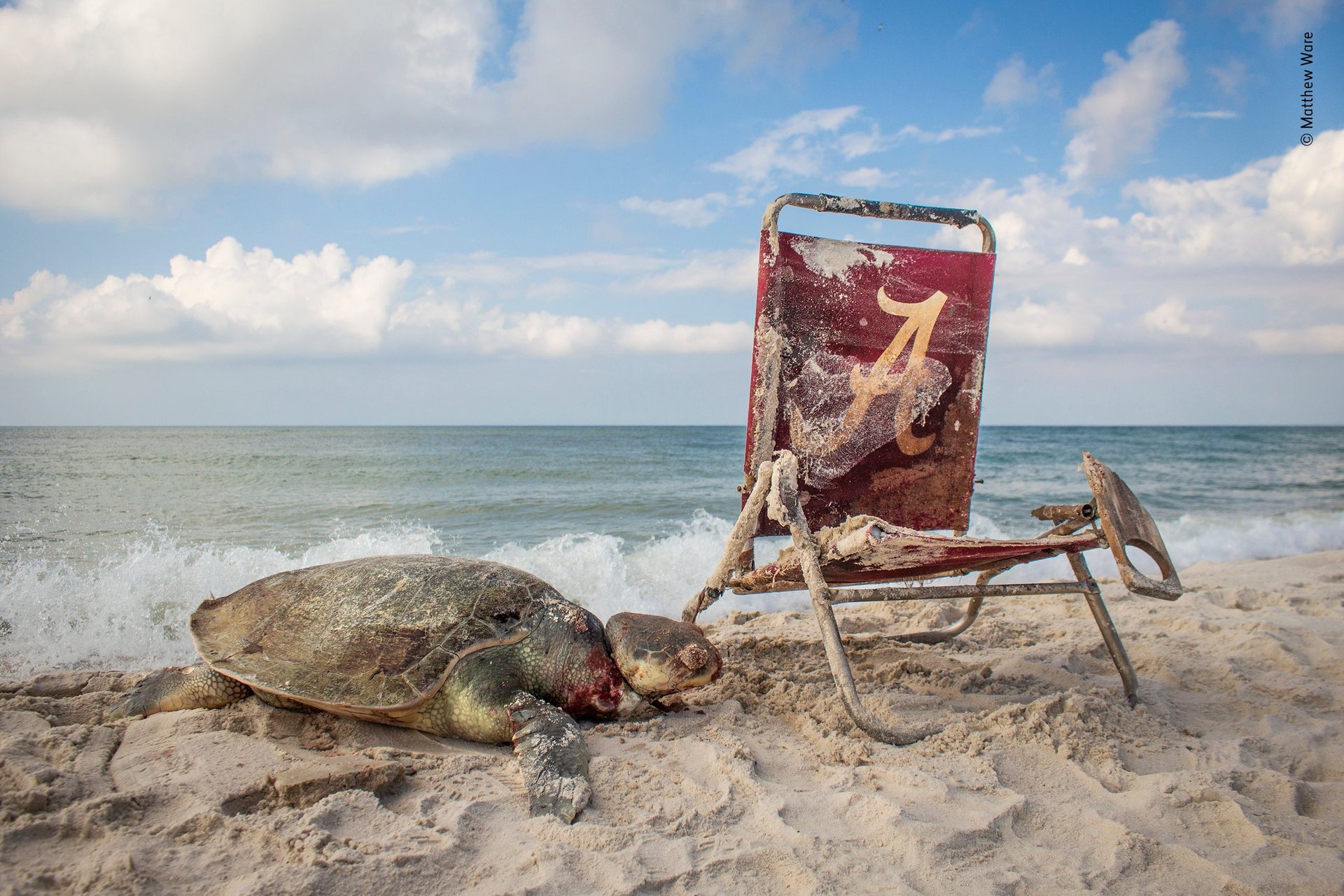
Correction: This article was edited to better reflect the provided caption from the competition for the photo of the bull hippo and the calf.